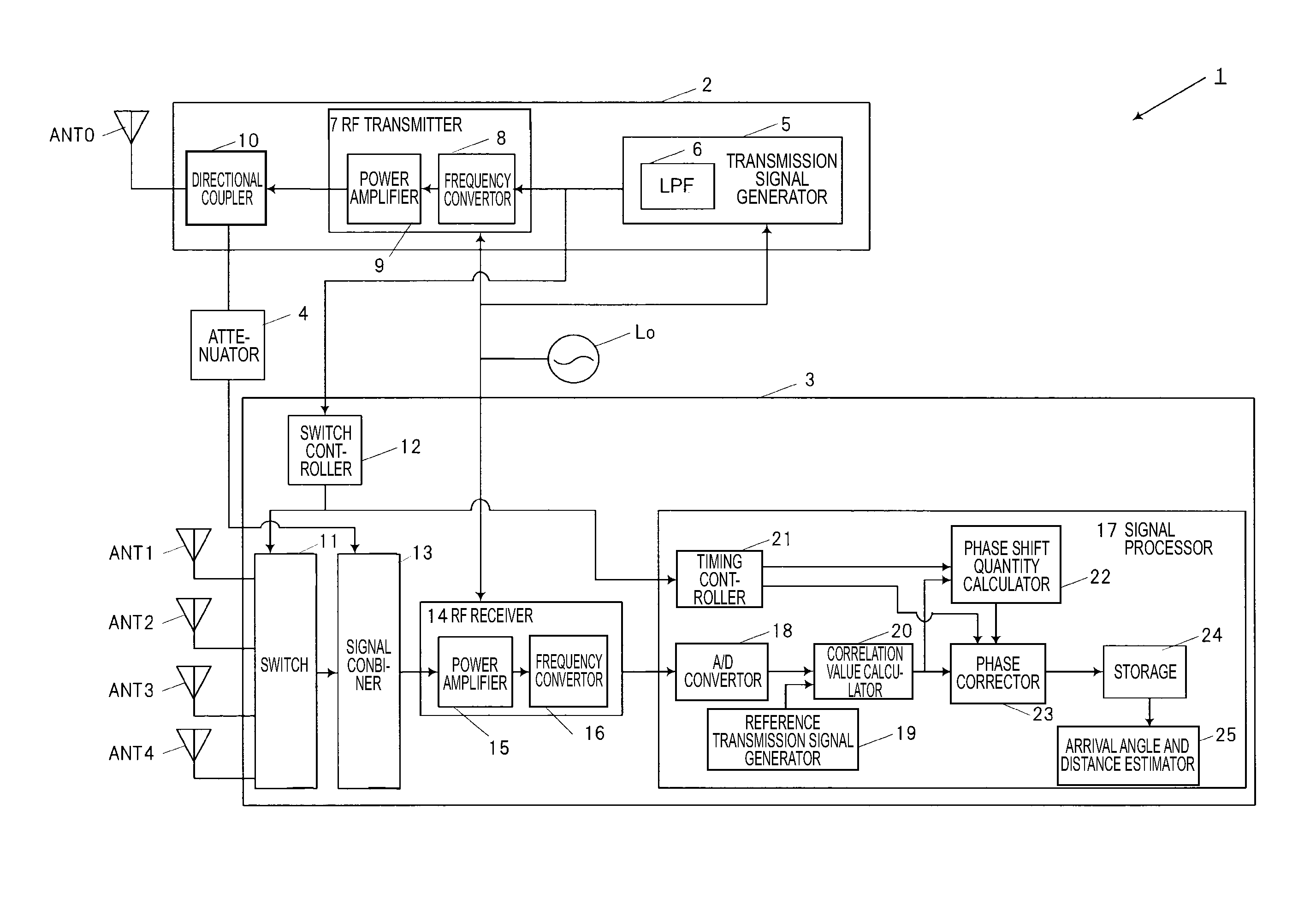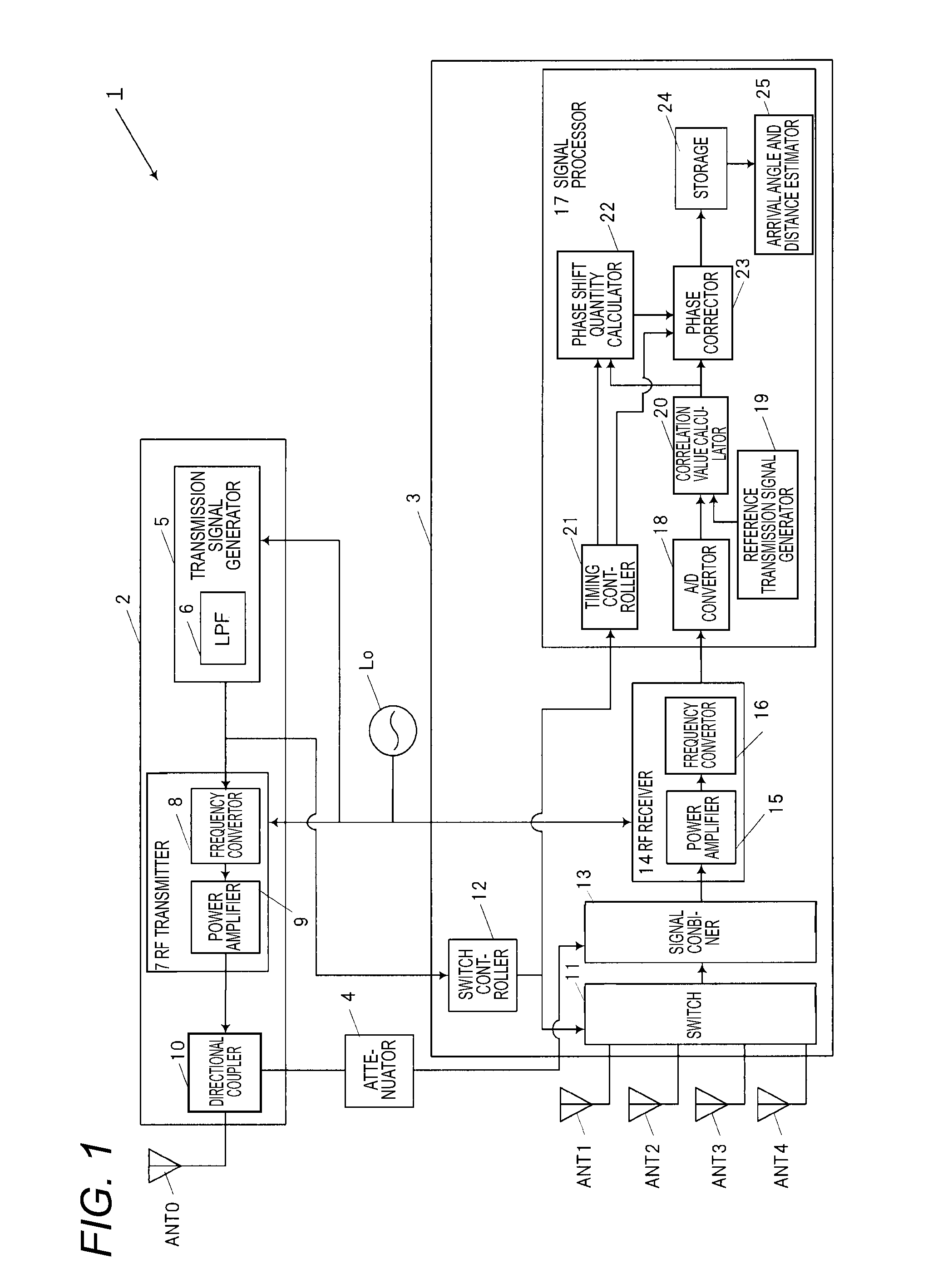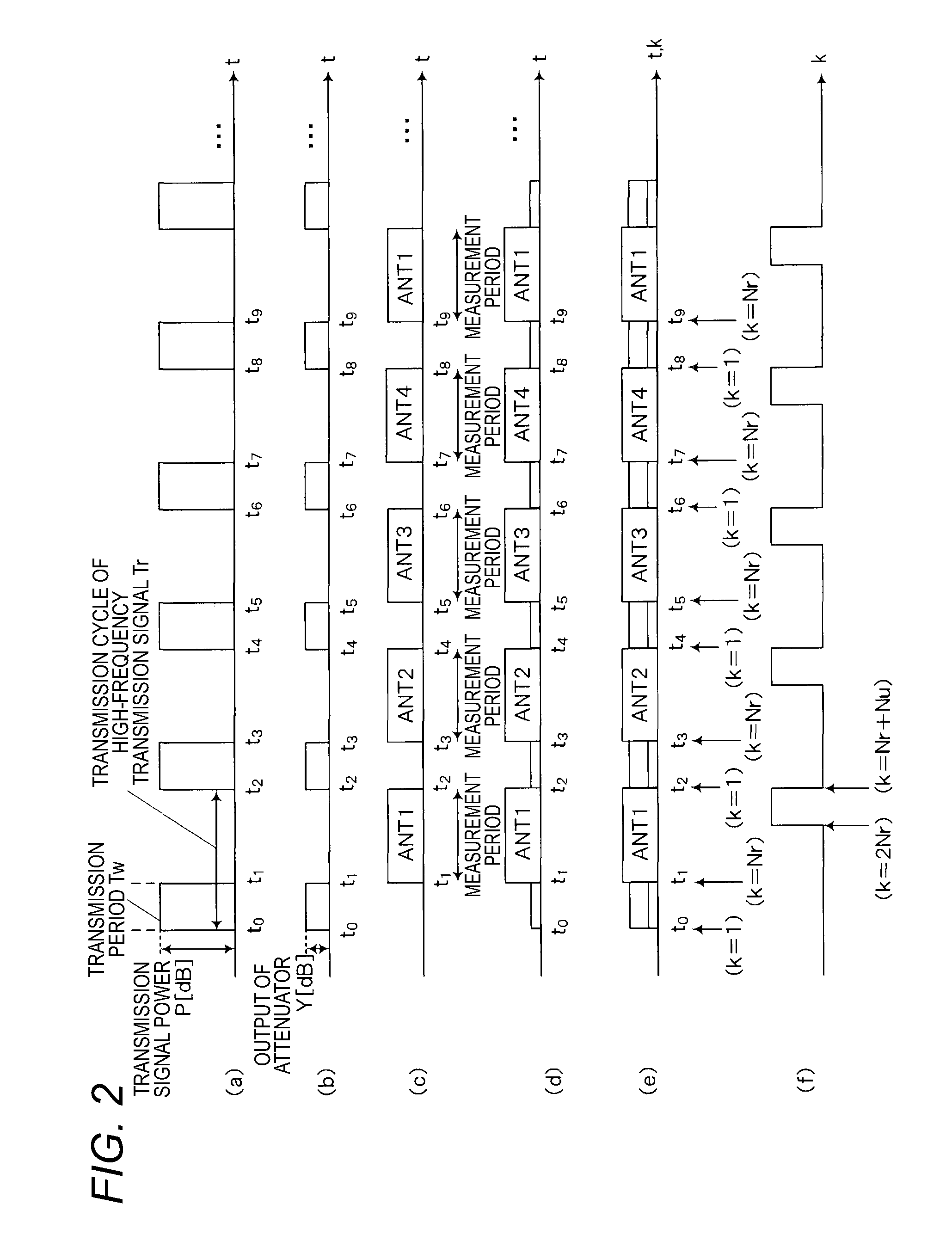Radar device
a technology of a radar and a detection device, which is applied in the direction of measurement devices, instruments, and using reradiation, etc., can solve the problems of low accuracy of target detection, difficult detection of a distant place, and deterioration of estimation accuracy, so as to suppress the influence of measurement time or measurement distance rang
- Summary
- Abstract
- Description
- Claims
- Application Information
AI Technical Summary
Benefits of technology
Problems solved by technology
Method used
Image
Examples
first embodiment
Modification 4 of First Embodiment
[0139]In the first embodiment, it is possible to correct the phase shift quantity in the reception signal due to operation of each element after the signal combiner 13 of the radar receiver 3. When there is fixed phase error in each system from the reception antenna to the switch 11 which are respective elements before the signal combiner 13, it is however difficult to correct the phase shift quantity inclusive of the fixed phase error.
[0140]In Modification 4 of the first embodiment, fixed phase error E(s) in each system from the reception antenna to the switch 11 is measured in advance so that the measured phase error E(s) is held in the signal processor.
[0141]The signal processor 17d has an A / D converter 18, a reference transmission signal generator 19, a correlation value calculator 20, a timing controller 21, a phase shift quantity calculator 22, an intersystem fixed phase error storage 30, a phase corrector 23, a storage 24, and an arrival angl...
second embodiment
[0145]In a second embodiment, a transmission antenna ANT0 and reception antennas ANT1 to ANT4 are disposed so as to be located so that a high-frequency transmission signal transmitted from the transmission antenna ANT0 can be directly received by each of the reception antennas ANT1 to ANT4 by using side lobes of the directional pattern of the transmission antenna ANT0, side lobes of the reception antennas ANT1 to ANT4 or the like. Moreover, in the second embodiment, the two measurement periods of a reference phase update period and an ordinary period are repeated at regular intervals so that calculation of the phase shift quantity in each reception antenna ANTs and correction of the phase component of the correlation value based on the calculated phase shift quantity are performed.
[0146]In the reference phase update period, the second switch 31 is turned on to perform inputting of the high-frequency transmission signal attenuated by the attenuator 4 to the signal combiner 13 in the ...
third embodiment
[0211]The configuration and operation of a radar device 1f according to a third embodiment will be described with reference to FIGS. 11 and 12. FIG. 11 is a block diagram illustrating the internal configuration of the radar device 1f according to the third embodiment.
[0212]FIG. 12 is a timing chart concerned with operation of the radar device 1f according to the third embodiment. In FIG. 12, (a) is an explanatory view illustrating a timing chart of a high-frequency transmission signal. In FIG. 12, (b) is an explanatory view illustrating a timing chart of the high-frequency transmission signal input to a signal combiner 13f from an attenuator 4. In FIG. 12, (c) is an explanatory view illustrating a period of measurement by each of reception antennas ANT1 to ANT4. In FIG. 9, (d) is an explanatory view illustrating a reception signal output from the signal combiner 13f and a period of measurement by each of the reception antennas ANT1 to ANT4.
[0213]In FIG. 12, (e) is an explanatory vie...
PUM
 Login to View More
Login to View More Abstract
Description
Claims
Application Information
 Login to View More
Login to View More - R&D
- Intellectual Property
- Life Sciences
- Materials
- Tech Scout
- Unparalleled Data Quality
- Higher Quality Content
- 60% Fewer Hallucinations
Browse by: Latest US Patents, China's latest patents, Technical Efficacy Thesaurus, Application Domain, Technology Topic, Popular Technical Reports.
© 2025 PatSnap. All rights reserved.Legal|Privacy policy|Modern Slavery Act Transparency Statement|Sitemap|About US| Contact US: help@patsnap.com



